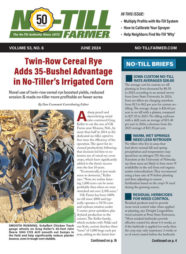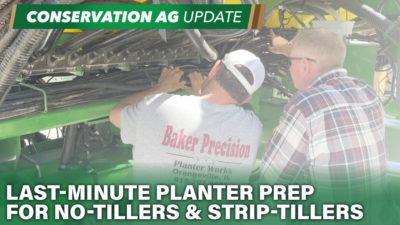Source: University of Nebraska Extension CropWatch
In an effort to ensure profitable production on the estimated 84.6 million acres of soybeans in 2015, growers are scrutinizing inputs and really focusing on profit. Using products/inputs that may increase yields 2 bushels per acre might have been profitable when soybeans were $14.40 per bushel in 2012, but it becomes a stretch at the $9.73 per bushel set in February for some crop insurance policies.
During soybean planting season we often think of planting date, seeding rate and seed treatments. In regard to seed treatments, one of the choices being made right now is "Should I inoculate my soybeans?" The risk vs. reward of inoculating soybeans has been discussed for decades. The risk is not lower yields, just whether the inoculant is going to return a profit, even though it is relatively cheap.
The process of fixing nitrogen (N) in the soil air to ammonia occurs through the symbiotic relationship between soybeans and the Bradyrhizobium species, a bacteria within the nodules of soybean roots. The soybeans get needed N and the bacteria get some carbohydrates in return. This process provides soybean plants 46-74% of what they need; the remaining amount is taken up from the soil (Salvagiotti 2008).
A 70-bushel-per-acre soybean crop will take up roughly 330 pounds of N per acre in the aboveground portion of the plant, roughly equivalent to the N demand of a 245 bushel per acre corn crop.
A soybean field likely fits into one of three situations:
- No previous history of soybeans.
- It has been more than 3-5 years since soybeans were grown, or soybeans have been grown in rotation every 2-3 years, but an environmental factor may have negatively impacted survival of bacteria.
- Soybeans have been grown in the rotation every 2 or 3 years and environmental conditions have been good.
In situations where soybeans have never been grown, yield responses of 49 bushels per acre have been measured in Nebraska (Elmore 1984). However, more modest yield increases of 1-10 bushels per acre are expected. This is largely dependent on the N supply from soils and the relative increase in N fixation. For example, a 2009 Iowa study reported inoculation increased soybean yield 2 bushels per acre on land coming out of pasture (Ruiz Diaz 2009).
If your field falls in the second situation, several environmental factors can cause poor nodulation, decrease N fixation and reduce survival of these bacteria, including:
-
Non-optimal soil pH. Low soil pH can decrease nodulation, N fixation, and survival of various strains. Ideal pH is near 6.8. Soil pH less than 6.0 can start to decrease root hair modification needed for the formation of nodules (Duzan 2004). Therefore, following economic thresholds for lime application when soil pH decreases to 5.6-5.8 also manages bacteria. High soil pH and salinity also decrease nodulation, N fixation and survival of these bacteria.
-
Floods and droughts. Fields flooded for more than 1 week decrease N fixation and decrease survival of bacteria because bacteria need oxygen. Sandy soils and droughts in years when soybeans are not being grown also can lower populations. However, two recent research studies suggest not to be overly confident in assuming a yield response to inoculants after floods (Furseth 2011, Wilson 2014).
-
Increasing number of years since soybeans were last planted. Most university guidelines suggest inoculating if it has been more than 3-5 years since soybeans were last grown. These bacteria are still present in soils after 30 years in grass production, just at a much lower population.
Two more common situations in Nebraska where soybeans may benefit from inoculation are when soybeans are planted after continuous corn or after corn that followed 4 years of alfalfa. The probability of a yield response in fields with a recent history of soybeans is extremely low. An 8-year study (2000-2008) testing 51 inoculant products in 73 experiments conducted in Wisconsin, Iowa, Indiana, Minnesota and Nebraska resulted in average yield response of 0 bushels per acre (De Bruin 2008).
If your field falls into the third situation where the environmental factor listed above did not occur, some still advocate for inoculating with more effective N-fixing strains of these bacteria over common indigenous strains, e.g., Bradyrhizobium japonicum Bj123 (Shiro 2013), in the Midwest even when environmental conditions have been conducive for N fixation.
In the 2000-08 study, new inoculant products and strains were used. Of the 10 most widely tested products, yields were not influenced in fields with a recent history of soybean. This is likely due to highly competitive indigenous strains diminishing potential gains from applying more effective strains.
In summary, if you have managed soil pH well, planted soybeans recently, have medium to heavy textured soils, and have not experienced extended droughts or floods, refocus your money away from soybean inoculation and move it to other management options that have an improved chance of return.
For more information on soybean inoculation, see these Nebraska Extension resources:
- Soybean Inoculation: Understanding the Soil and Plant Mechanisms Involved (NebGuide 1621)
- Soybean Inoculation: Applying the Facts to Your Fields (NebGuide 1622)






Post a comment
Report Abusive Comment